Yes, mulberry silk, the most common and highest quality silk, is indeed real silk. It is made from the cocoons of silkworms, which feed exclusively on mulberry leaves. It has been cultivated for thousands of years. To understand what makes mulberry silk stand out, let's take a closer look at what makes it unique and how it compares to other types of silk.
What is Silk?
Silk is a protein fiber produced by silkworms as they spin cocoons. Silk is unique for its unique strength and softness. These fibers are harvested, processed, and woven into a fine fabric known for its smooth texture and shiny appearance.
History of Silk
The history of silk dates back more than 5,000 years and originated in China. Legend has it that Empress Leizu discovered silk when a silkworm cocoon fell into her tea. She noticed that the fiber could be unraveled and used to weave cloth. From that moment on, silk became a prized fabric.
For centuries, China kept its sericulture (sericulture) a closely guarded secret. It was so precious that smuggling silkworms out of the country was punishable by death.
The silk trade led to the development of the Silk Road, a network of trade routes that connected China to the Mediterranean. More than just a trade route for silk, the route connected many cultures, facilitating the exchange of goods, ideas, and inventions.

(Mulberry Silk Sleep Eye $77.00)
Types of Silk
Silk is a luxurious fabric known for its softness, sheen, and elegance. There are several types of silk, each with its unique characteristics and uses. Understanding these variations can help you make informed decisions whether you're buying silk clothing, bedding, or decor.
Mulberry Silk
Mulberry silk is the most popular type of silk. It is made from the cocoons of the Bombyx mori silkworm, which feeds exclusively on mulberry leaves. This type of silk is known for being very soft, smooth, and durable. Mulberry silk has a consistent color and texture, making it a favorite for high-end fashion and bedding.
Tussah Silk
Tussah silk, also known as wild silk, comes from silkworms that feed on oak and other types of leaves. This causes the silk to have a coarser texture than mulberry silk. Tussah silk is usually brownish or off-white in color and is less uniform in texture. Due to its durability, it’s often used in upholstery and home decor.
Eri Silk
Eri silk is another type of wild silk. It comes from the Eri silkworm, which feeds on castor leaves. Eri silk has a texture that is different from other silks—it is strong, durable, and has a slightly woolly feel. This silk is often used in producing warm clothing and shawls due to its insulating properties.
Wild vs. Cultivated Silk
The main difference between wild and cultivated silk lies in the environment and diet of the silkworms. Cultivated silkworms, like those producing mulberry silk, are raised in controlled environments with a strict diet of mulberry leaves. This results in a finer, more uniform silk.
Wild silks, like tussah and eri, come from silkworms that live in natural, uncontrolled environments. They eat a variety of leaves, which affects the texture and color of the silk. Wild silk is generally more coarse and less uniform but has its own unique charm and
What is Mulberry Silk?
Mulberry silk is widely considered the gold standard among silks. It's a natural fiber produced by Bombyx mori silkworms, which exclusively feed on mulberry leaves. This silk has been prized for centuries due to its exceptional qualities.

Characteristics of Mulberry Silk
Mulberry silk has some unique features that set it apart from other types of silk. Here are some of its key characteristics:
- Luster: One of the first things you'll notice about mulberry silk is its incredible shine. The fibers have a natural sheen that catches the light beautifully, giving fabrics a glossy appearance.
- Strength: This silk is incredibly strong, more so than other natural fibers. It's durable and can withstand a lot of wear and tear, making it ideal for various applications.
- Softness: Mulberry silk is extremely soft to the touch. It's smoother than other types of silk, which makes it comfortable to wear and sleep on.
These qualities make mulberry silk highly sought after in the textile industry.
Mulberry Silk Pillowcase Benefits
Using a mulberry silk pillowcase can offer several benefits:
- Better Skin: Silk is gentle on your face, reducing the chances of wrinkles and fine lines. It doesn't absorb moisture from your skin like cotton does, helping your skin stay hydrated.
- Healthier Hair: Sleeping on a silk pillowcase can reduce hair breakage and frizz. The smooth surface allows hair to glide over it, minimizing damage and split ends.
- Hypoallergenic: Mulberry silk is naturally hypoallergenic. It resists common allergens like dust mites, mold, and fungus, making it a great choice for people with allergies.
- Temperature Regulation: Silk pillowcases help maintain a comfortable temperature. They keep you cool in the summer and warm in the winter, ensuring a good night's sleep.
So, when you invest in a mulberry silk pillowcase, you're not just buying luxury; you're investing in better skin and hair and a healthier sleeping environment.

How to Identify Real Mulberry Silk
Real mulberry silk is known for its luxurious feel and durability, but it can be tricky to tell it apart from synthetic alternatives. Knowing how to test for authenticity can help you avoid being misled. Here are practical ways to verify mulberry silk at home.
Burn Test
One of the most straightforward ways to check if silk is genuine is through a burn test.
Cut a small sample of a small piece of fabric. Use a match or lighter. Real silk will slowly burn, smell like burnt hair, and leave a crumbly ash.
Sheen Test
Hold the fabric up to the light. Real silk will appear to change color slightly, showing different shades. Synthetic silk usually has a flat, consistent sheen that doesn't change.
Touch Test
Real mulberry silk feels soft and smooth, almost like running your hand over a soft flower petal. And real silk quickly heats up when you touch it. Unlike synthetic silk, real mulberry silk doesn't generate static electricity.
Water Test
Another quick and easy test involves water: put a few drops of water on the fabric. Real mulberry silk will absorb water and darken temporarily. Synthetic silk will repel water or take longer to absorb.
Loop Test
This old-fashioned test is still very effective. Real mulberry silk will pass through the loop easily due to its fine quality. If it is difficult to pass through, it is probably a synthetic blend.
How Often Should You Wash Silk Pillowcases
Washing regularly will keep your pillowcases fresh and free from dirt and oil buildup over time. Wash silk pillowcases every one to two weeks. If you have oily skin or hair, consider washing them weekly.
Use a mild detergent designed for silk or delicate fabrics and wash in cold water. Avoid bleach and fabric softeners, as they can damage silk fibers.
If you choose to use a washing machine, place your pillowcases in a mesh laundry bag to prevent damage. Wash on a gentle cycle with minimal agitation.
Hand washing is the best option for silk. Fill a basin with cold water and a small amount of mild detergent. Gently agitate the water and soak the pillowcase for about five minutes. Rinse thoroughly with cold water.
Do not wring out silk pillowcases. Instead, lay them flat on a clean, dry towel and roll up the towel to remove excess moisture. Then, hang them to dry, away from direct sunlight. Avoid using a dryer, as high temperatures can damage silk.
Conclusion
The production of mulberry silk requires great attention to detail. The silk thread is hand-spun and hand-woven, ensuring that each fiber retains its strength and luster. This meticulous process leads to its high cost but also ensures the best quality.
If your skin and hair need care, you might as well try buying bedding made of silk, you will get unexpected results.
Read More:
Eye Mask For Sleeping Benefits: Which Ones Do You Know?Fitted vs Flat Sheet: What Are the Differences?

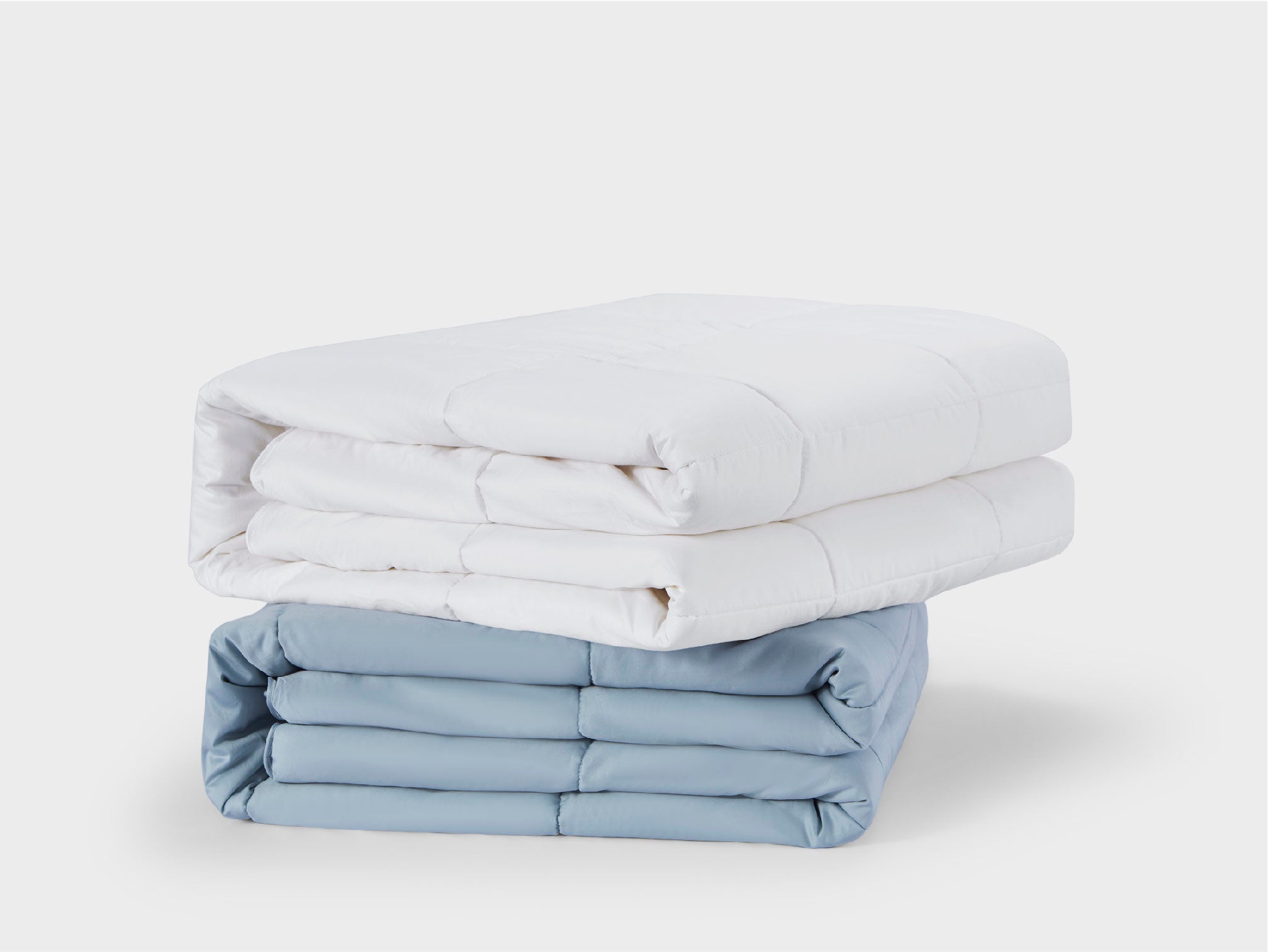
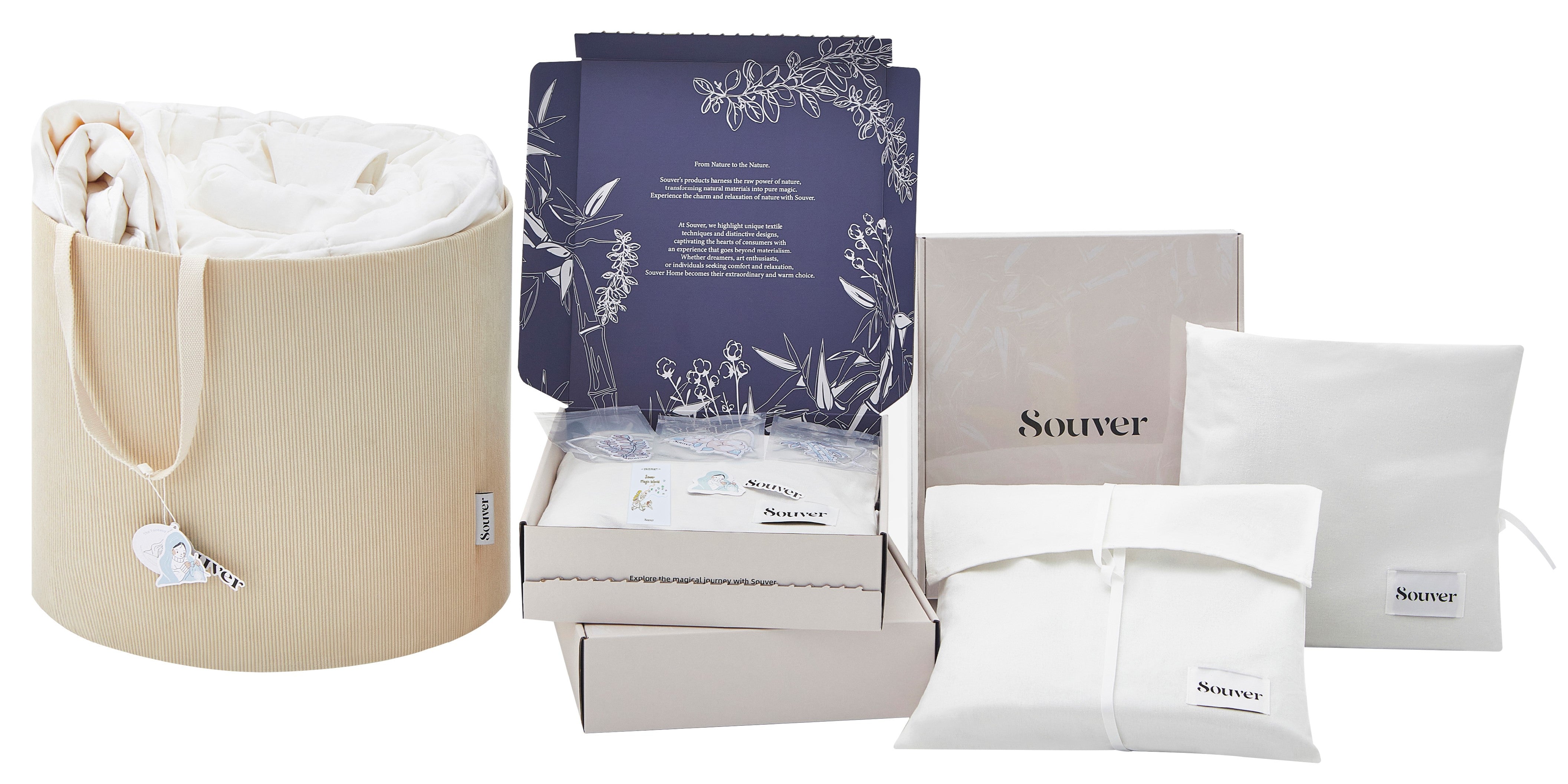


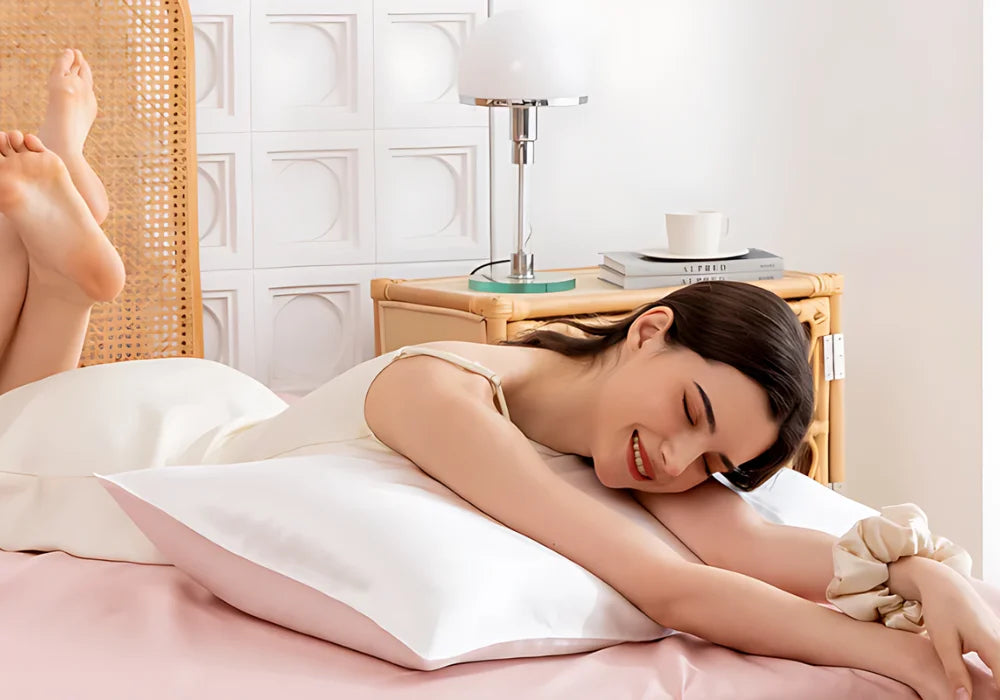
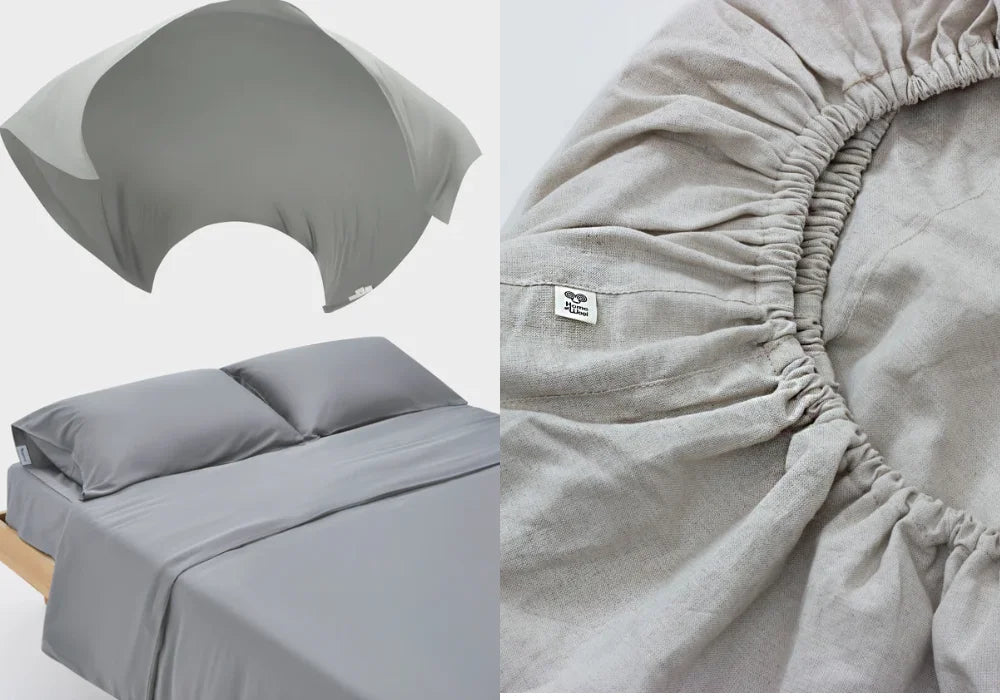
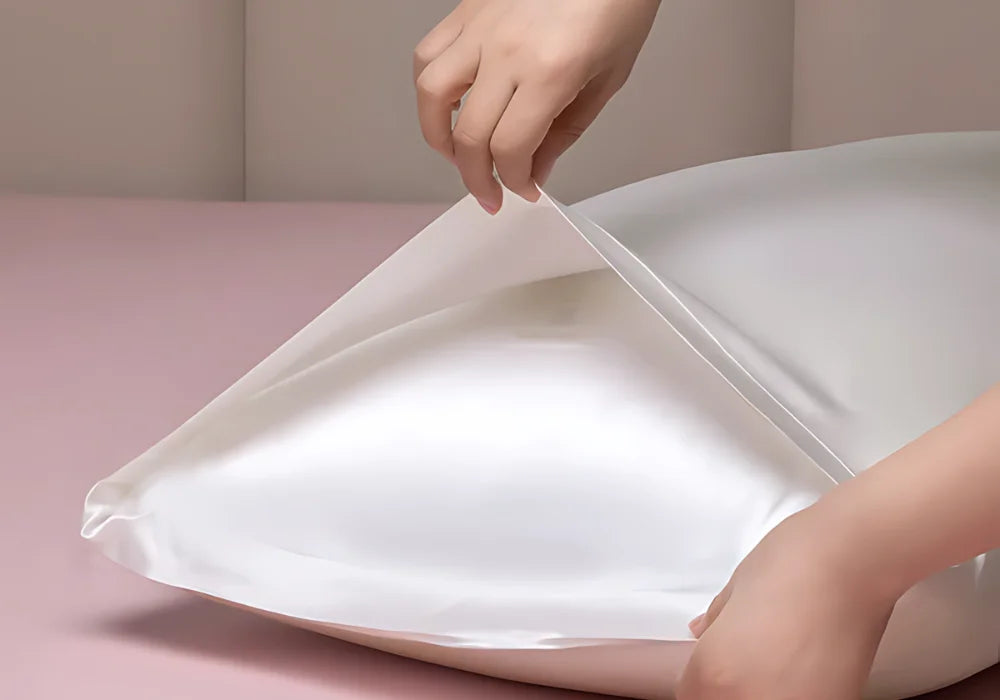
Leave a comment
This site is protected by hCaptcha and the hCaptcha Privacy Policy and Terms of Service apply.